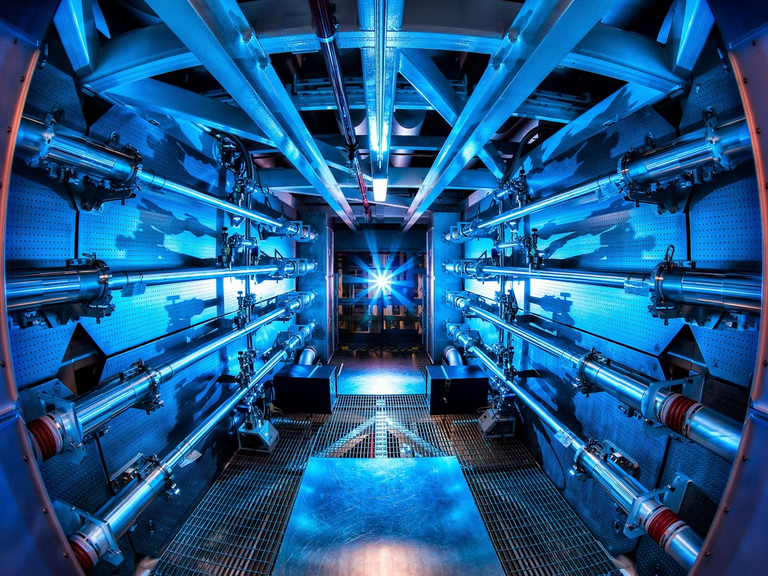
https://www.energy.gov/articles/doe-national-laboratory-makes-history-achieving-fusion-ignition
For my whole life, since I was a child trying to understand what went wrong at Three Mile Island, and dreaming of compact power plants to drive space ships, I've been excited about fusion. The Princeton Plasma Physics Lab publicity was probably one of the things as a child that drove my aspiration to study physics.
I do wonder if there is deliberate obfuscation about the significance. It's more of a token achievement than some kind of key engineering accomplishment.
I'm even confused about the claim. I thought it was ignition, not just breakeven, but the announcement says "On December 5, a team at LLNL’s National Ignition Facility (NIF) conducted the first controlled fusion experiment in history to reach this milestone [ignition?], also known as scientific energy breakeven, meaning it produced more energy from fusion than the laser energy used to drive it.".
Understood for a magnetic confinement fusion system, "breakeven" means the reaction released more energy than was put into it, whereas "ignition" is the much higher bar of releasing enough energy to sustain itself (much of the breakeven energy dissipates). "Breakeven" means you put a match to wood, and the wood puffs a bit and the energy in the smoke exceeds the energy in the burning match, but the whole thing might fizzle. "Ignition" means you've got a fire burning.
In an inertial confinement system, perhaps this distinction doesn't make sense because there really isn't any way for the reaction to continue. But calling that "ignition" seems like a cheat. Just because there isn't adjacent non-fusing material to potentially ignite doesn't mean therefore it's "ignition", any more than turning a starter motor with no engine would be "starting" or lighting a match with no wood to ignite would be "starting a fire". It seems to me the standard for ignition for an inertial confinement system should be the energy amount and form required to trigger an adjacent pellet to fuse, such that a chain reaction could take place triggered only by the initial pulse.
In any case, the lasers put 2.05 megajoules into the pellet and 3.15 megajoules was released.
To put that in perspective, to power up the lasers to be able to dump 2 megajoules into that target takes hundreds of megajoules. It's not an efficient system. So if you consider the system as a whole, it's at like 1% of the energy yield it needs for it to produce net positive energy.
But if it did produce net positive energy, that still isn't enough. We'd have to capture that energy, and turn it into electricity. There's very generously only a factor of 2 there, but could well be more.
So at 0.5 megajoules of usable energy, to match the usable energy of a typical fission power plant of one gigaWatt, you'd need to sustainably do that 2000 times per second. I'm out of date on the current capacity but about a decade ago it would take them more than three years to fire 2000 times, a difference of 100 million X.
So overall we’re too small by a factor of 10 billion. If this were about going to the Moon, we’d be almost exactly at the one and a half inch mark.
Every step is indeed a step closer to viable commercial fusion power at scale. But we're basically saying we got the Wright Brothers airplane off the ground and we're talking about hundreds of people living in bases on the Moon. Advances in AI may cause any engineering timeline to suddenly compress, but barring that, the fusion goal is decades away. It probably isn't a solution for climate change due to carbon emissions, for example. I worry the fusion aspiration misleads the public about the merits and pragmatic necessity of escalating fission as soon as possible.
The cold fusion scam run by Pons and Fleischmann in the 1980s put a damper on fusion research.
Despite that, I think fusion is one of the most promising areas of research.
!BEER